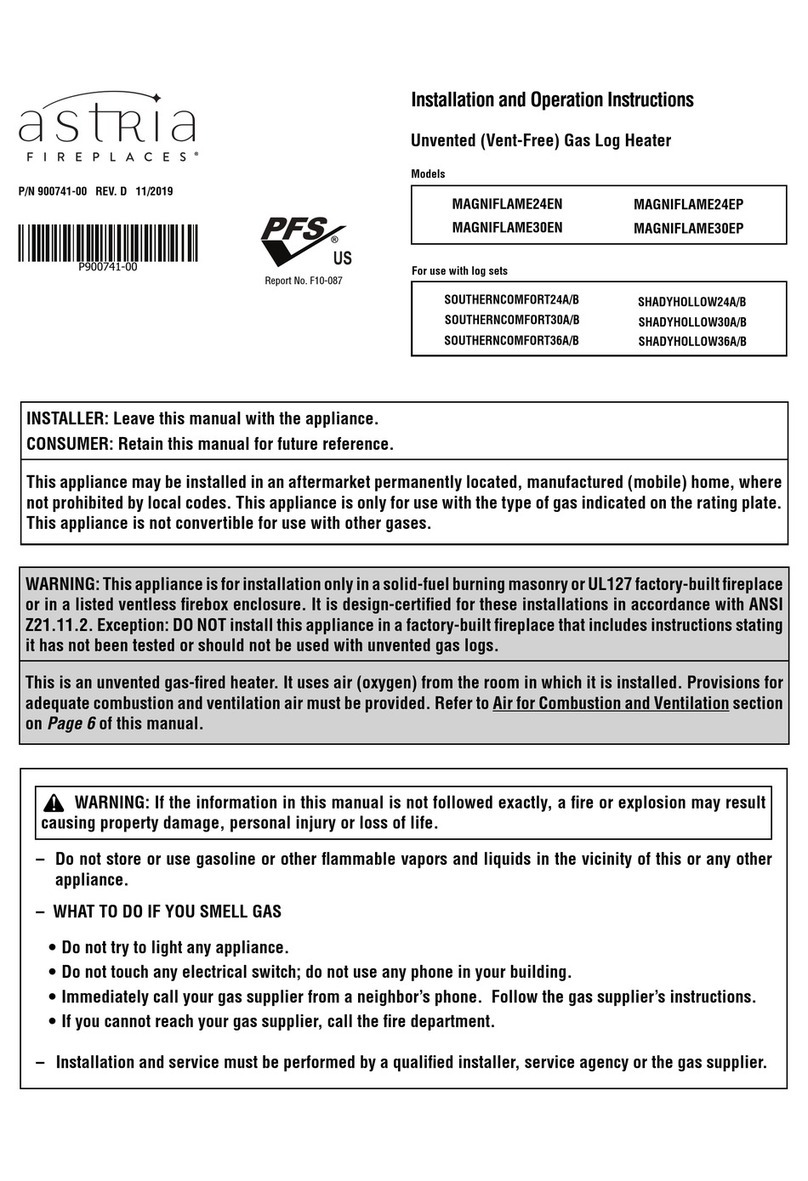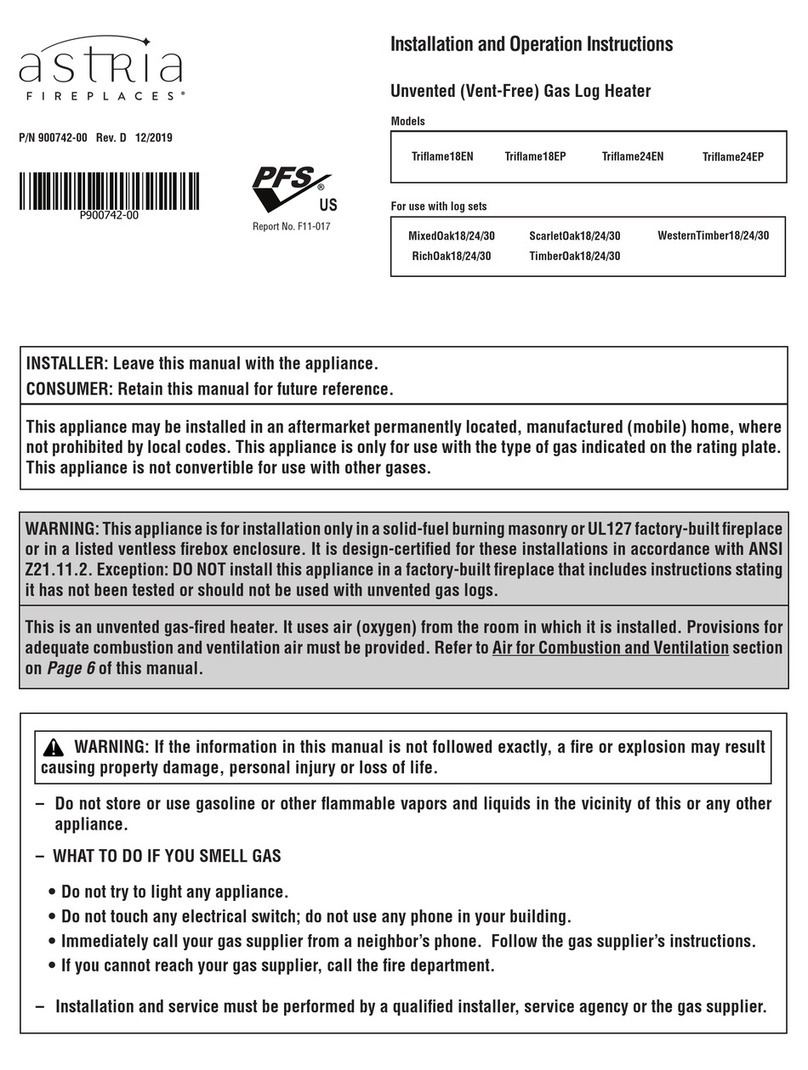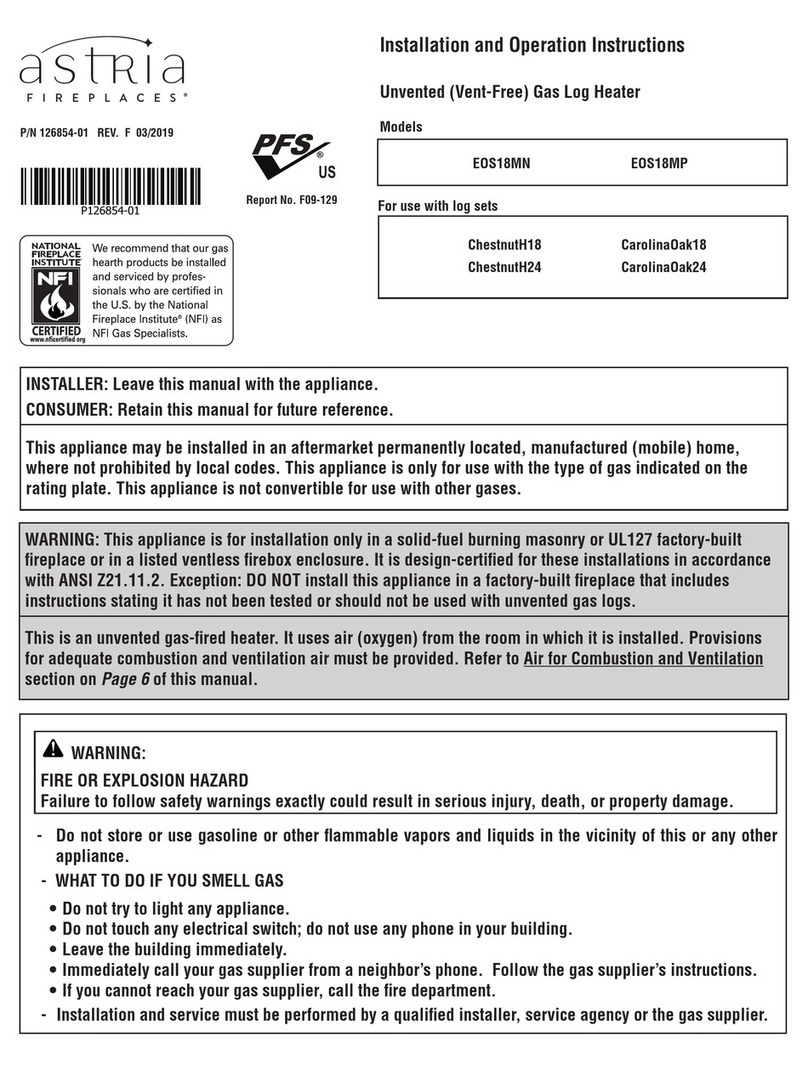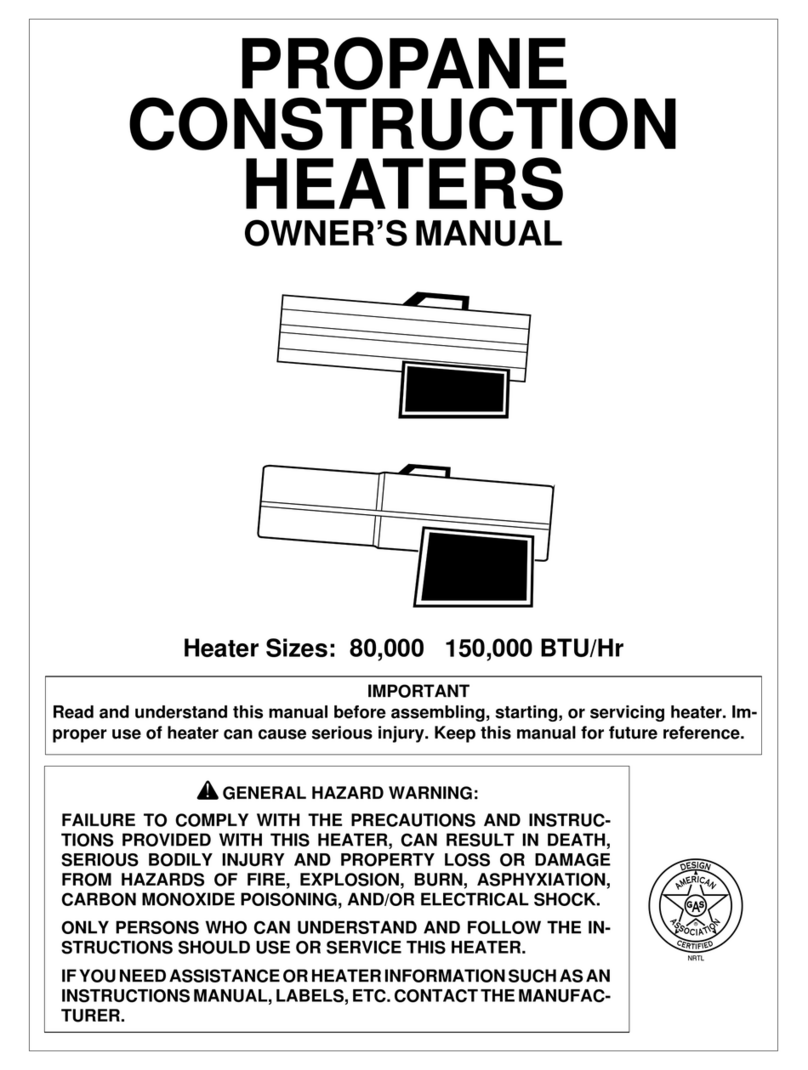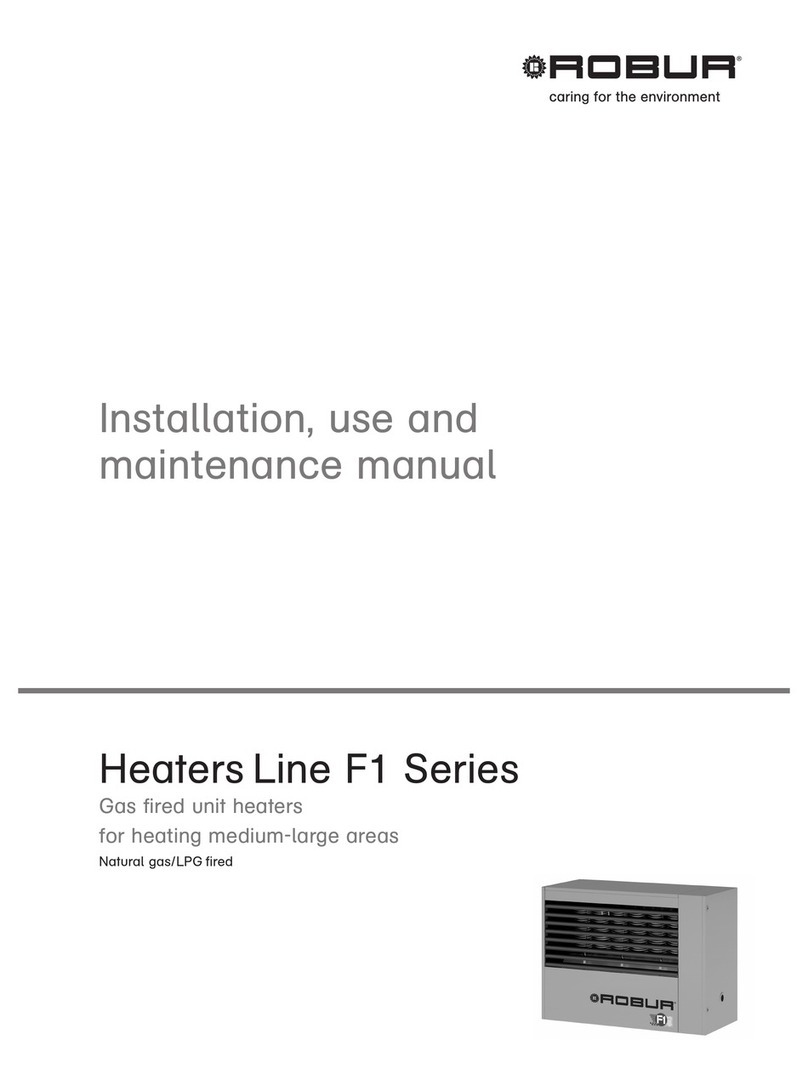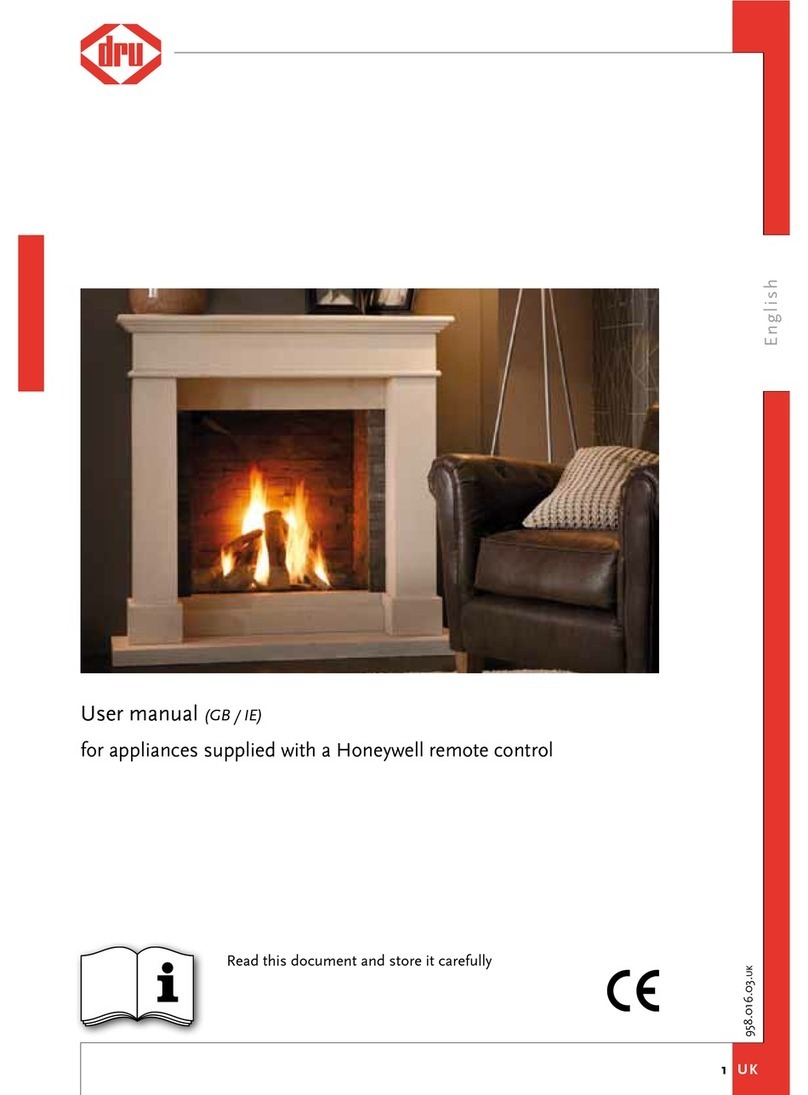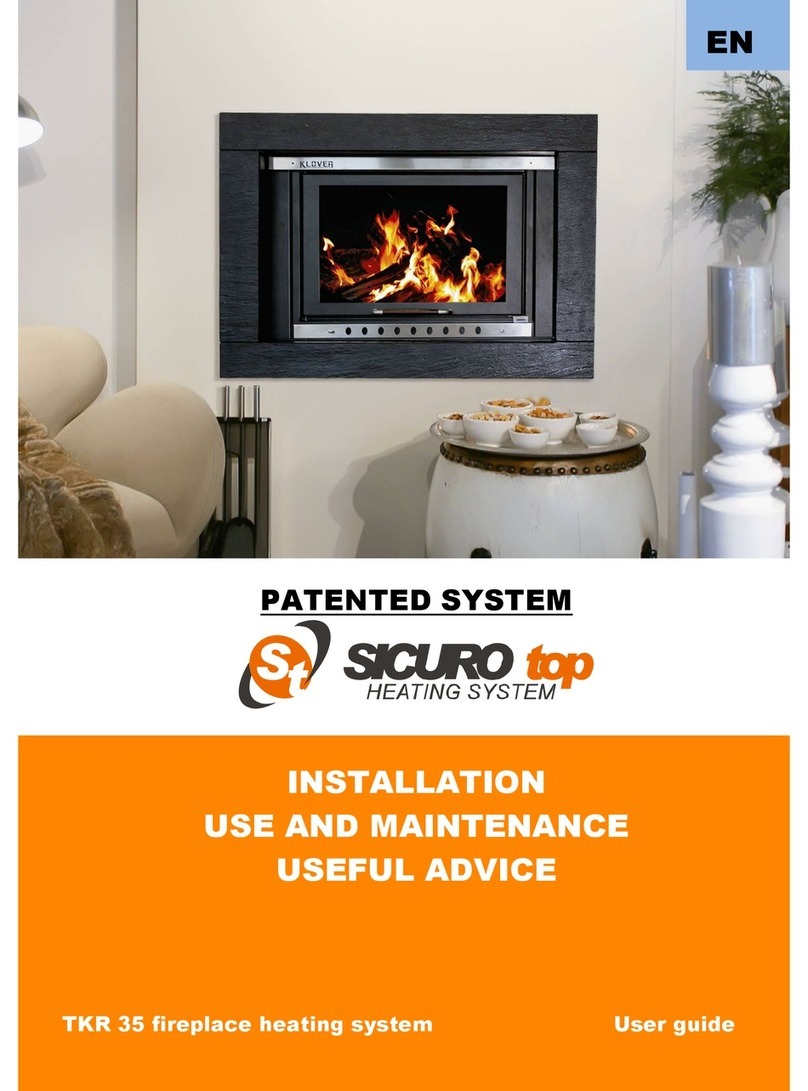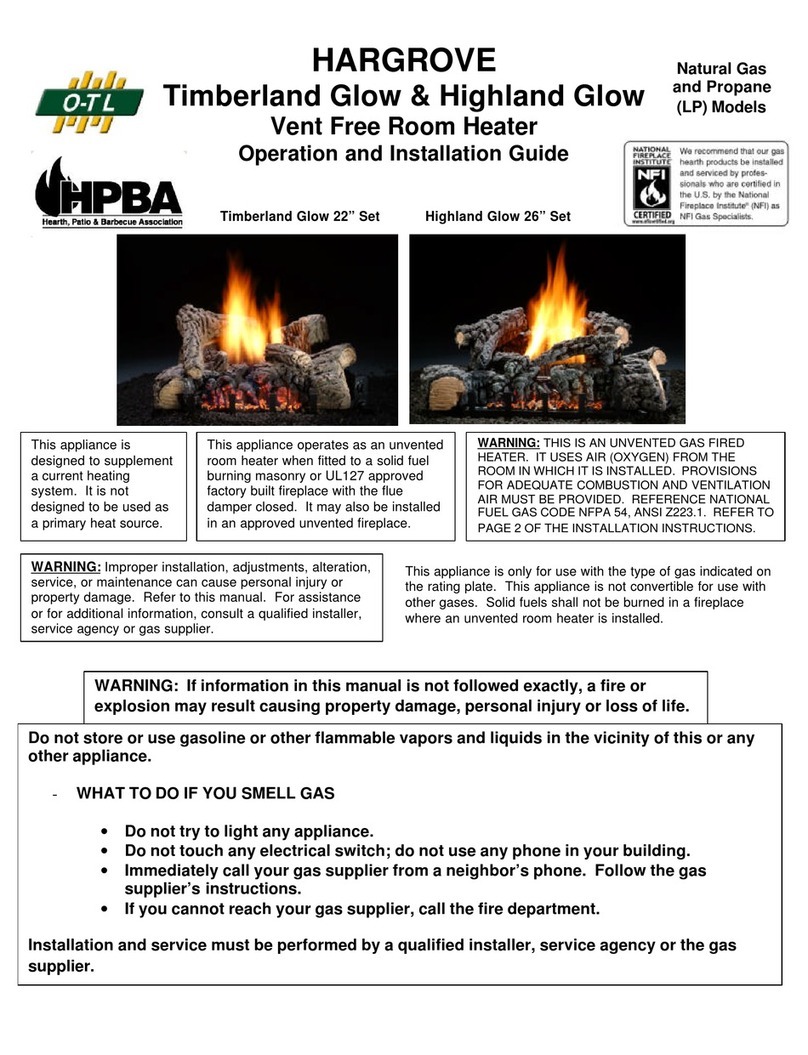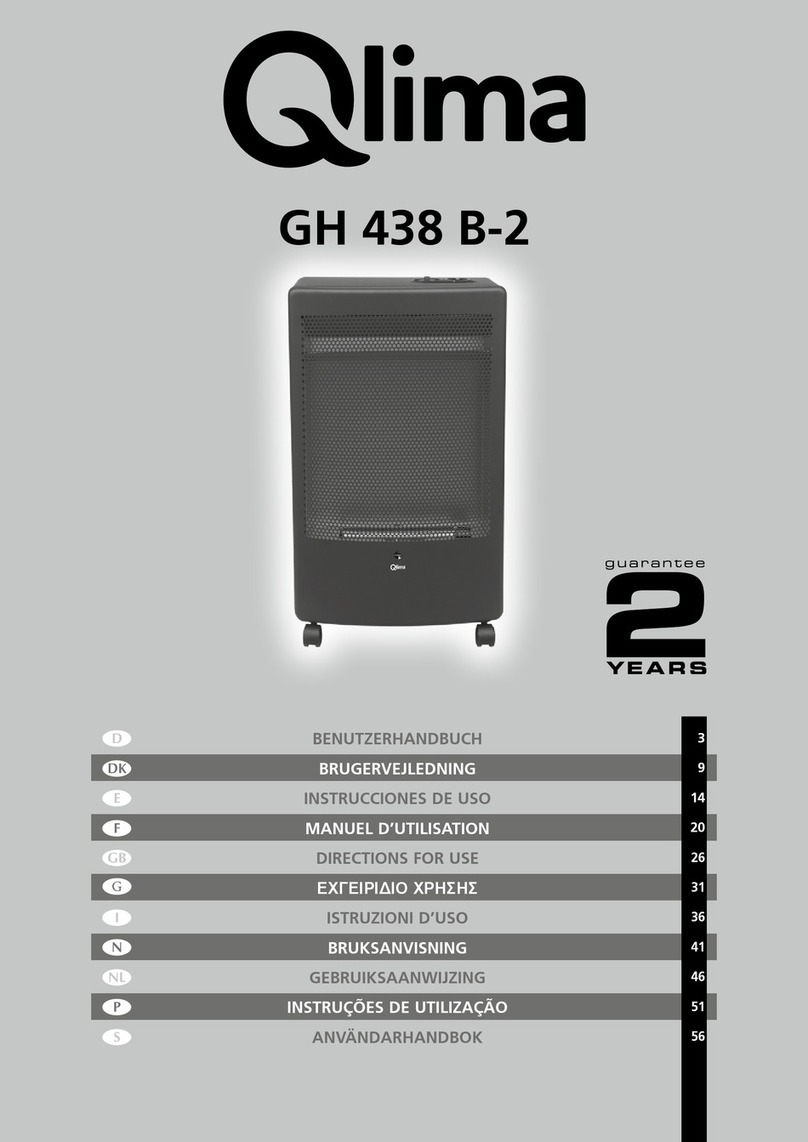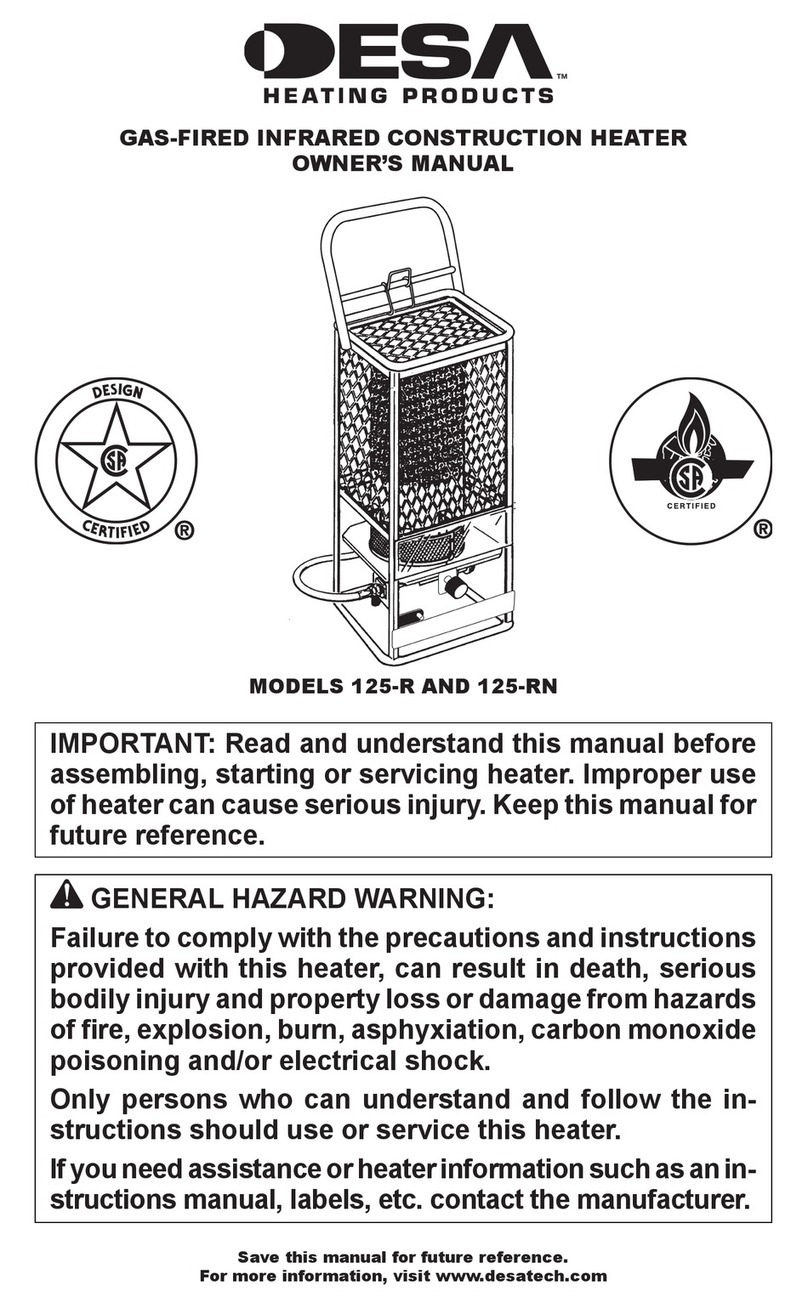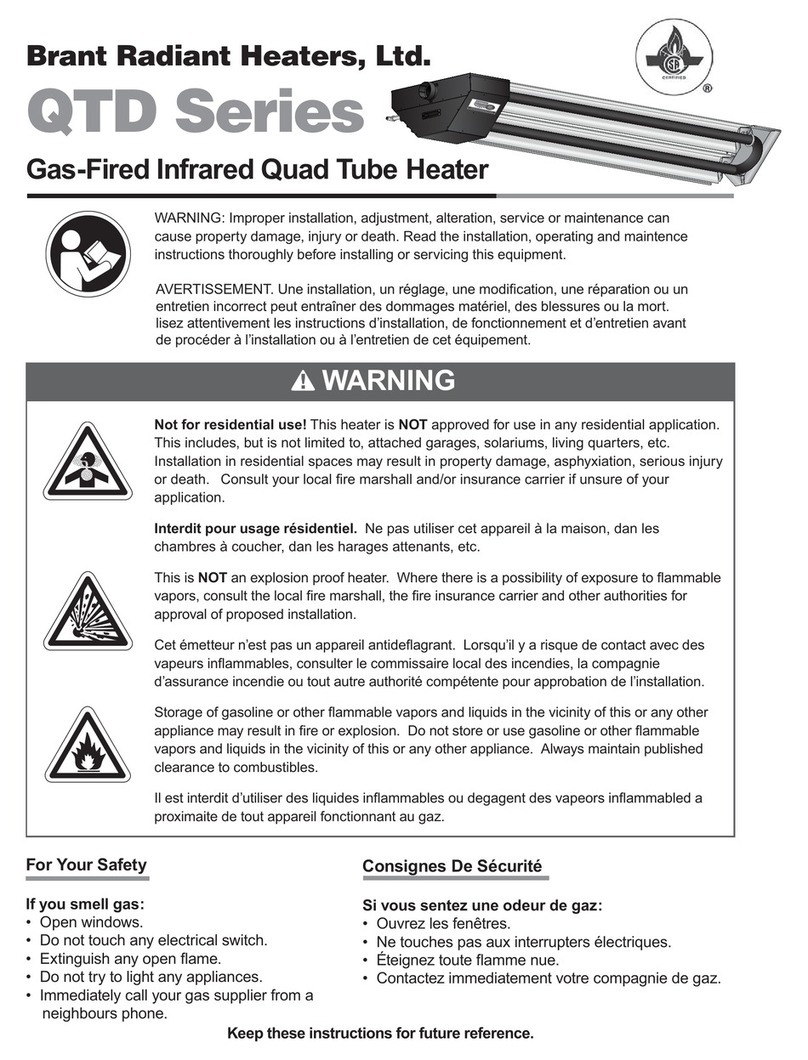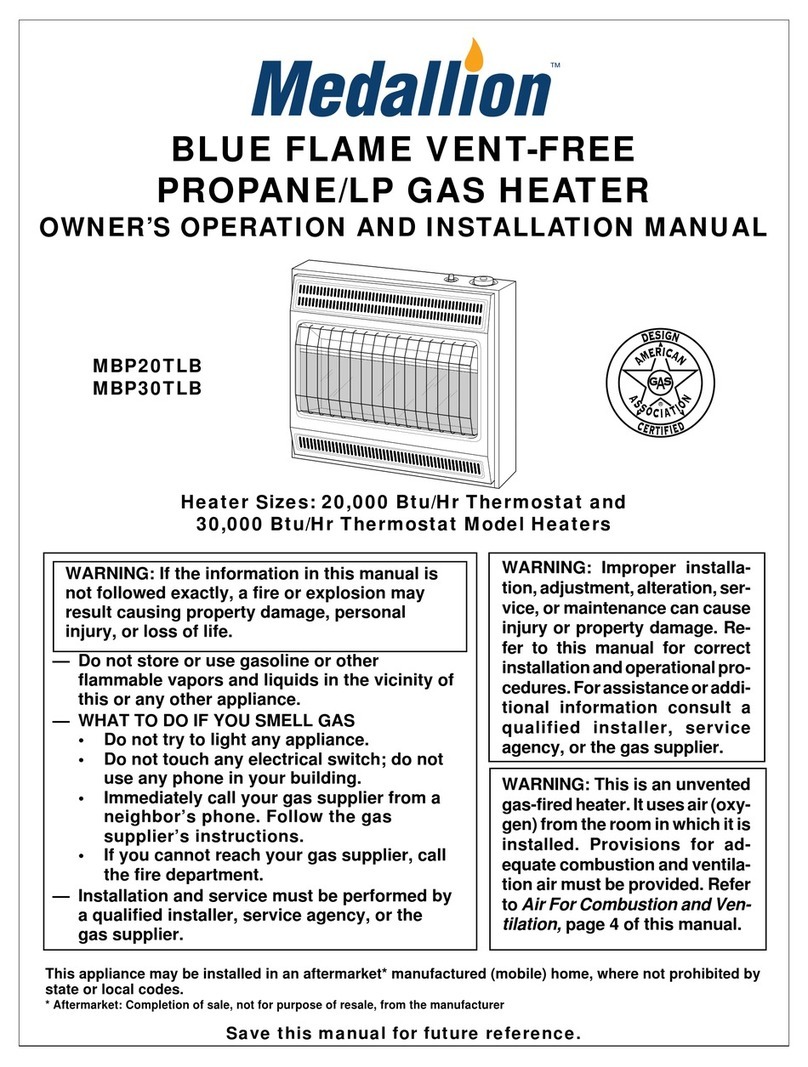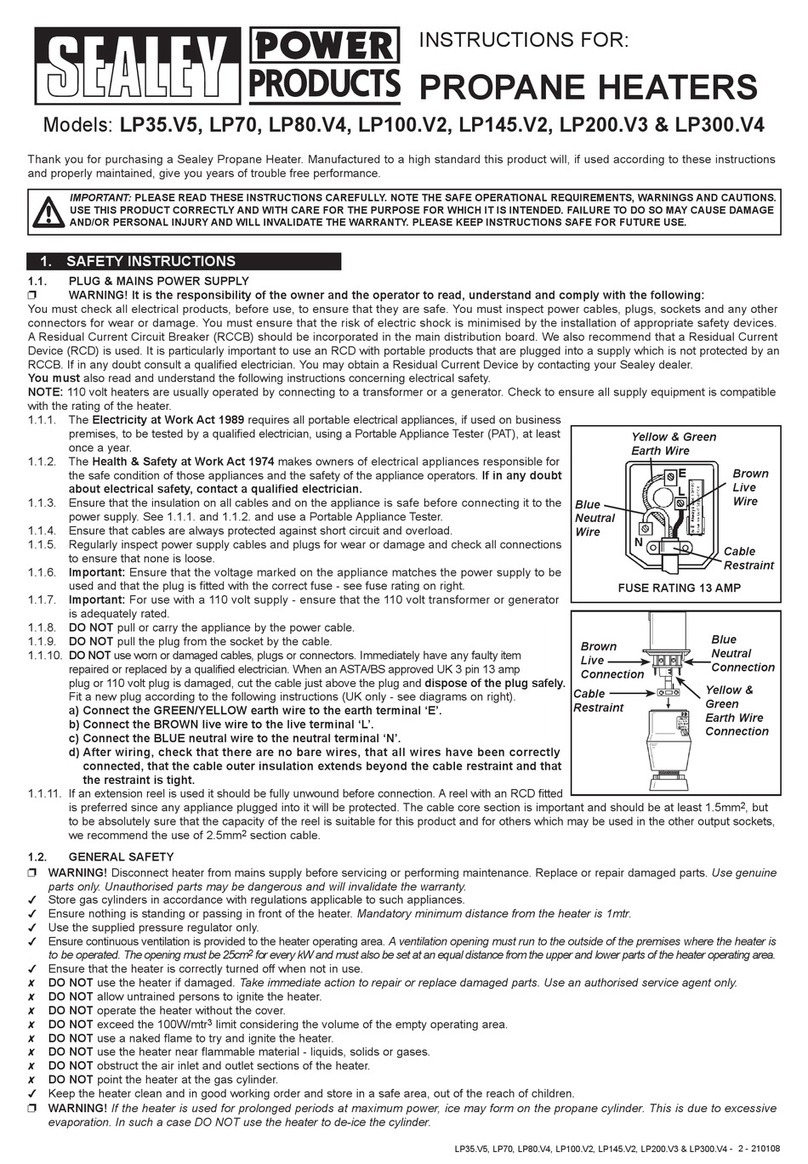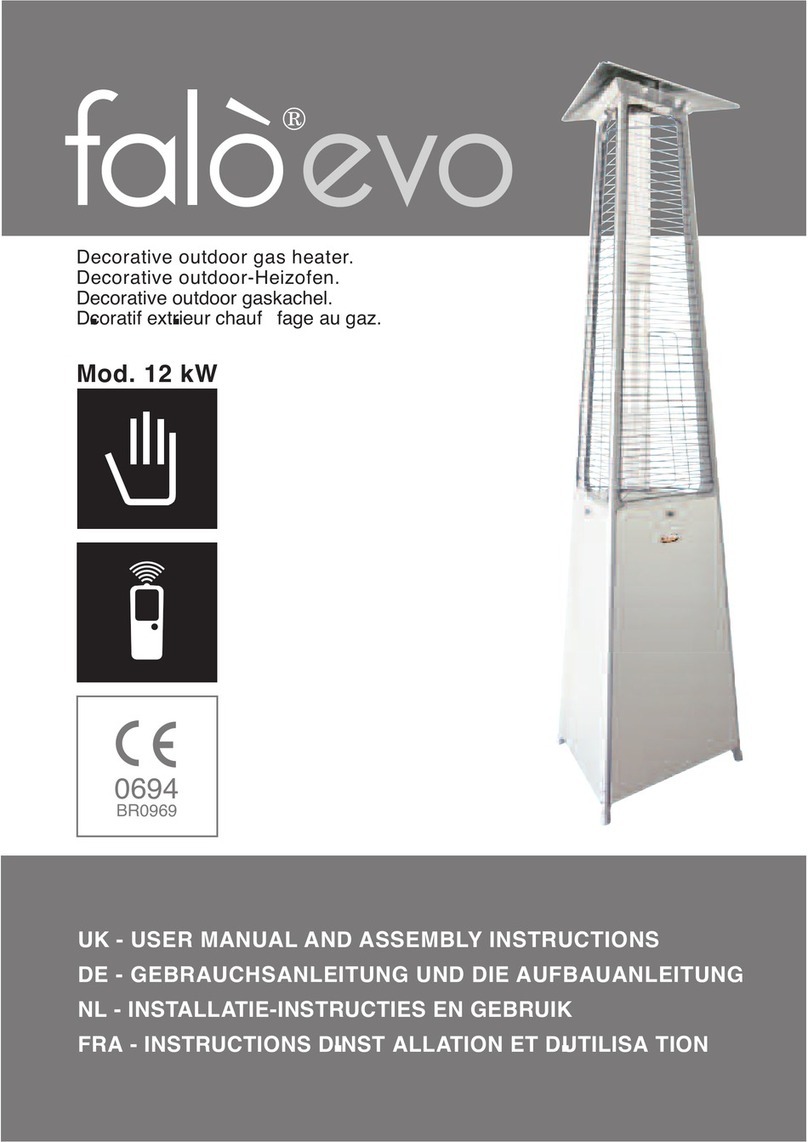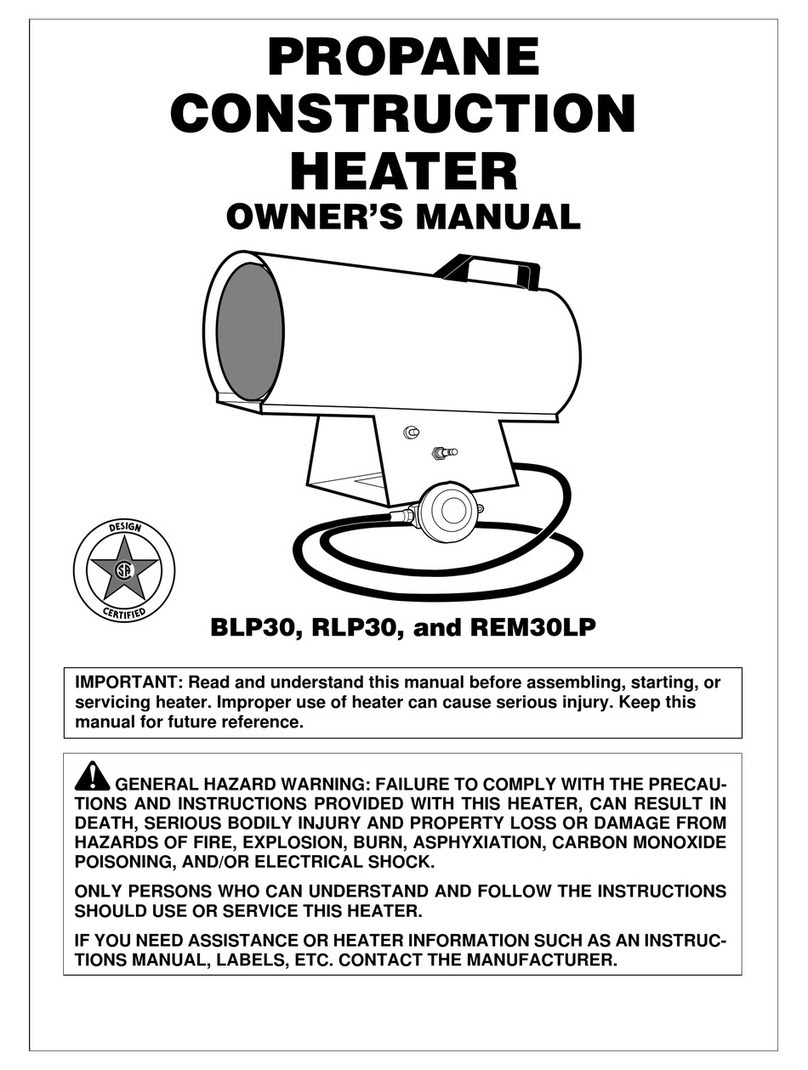
Astria.us.com 126810-01B6
PRODUCT FEATURES
OPERATION
Thisheateriscleanburning.Itrequiresnooutside
venting. There is no heat loss out a vent or up a
chimney. Heat is generated by realistic flames
and glowing ceramic logs/coals. This heater is
designed for vent-free operation with flue damper
closed. It has been tested and approved to ANSI
Z21.11.2standardforunventedheaters.Stateand
localcodesinsomeareasprohibittheuseofvent-
free heaters. This heater may also be operated
as a vented decorative (ANSI Z21.60) product by
opening the flue damper.
SAFETY DEVICE
Thisheaterhasa pilot withanOxygenDepletion
Sensing(ODS)safetyshutoffsystem.TheODS/
pilotisa requiredfeaturefor vent-freeroomheat-
ers. The ODS/pilot shuts off the heater if there
is not enough fresh air.
ELECTRONIC IGNITION SYSTEM
This system has an electronic igniter. This
system requires no matches or other sources
to light heater. Receiver requires 4AAbatteries
(included), hand-held remote control requires a
12-volt battery and a 3-volt button cell battery
for the LCD display (both included).
AIR FOR COMBUSTION AND VENTILATION
Today’s homes are built more energy efficient
than ever. New materials, increased insulation
andnewconstructionmethods help reduce heat
lossinhomes.Homeownersapply weather strip
and caulk around windows and doors to keep
thecoldairoutandthewarmairin.Duringheat-
ing months, homeowners want their homes as
airtight as possible.
While it is good to make your home energy
efficient, your home needs to breathe. Fresh
air must enter your home. All fuel-burning ap-
pliances need fresh air for proper combustion
and ventilation.
Exhaust fans, some fireplaces, clothes dryers
and some fuel-burning appliances draw air from
thehouse tooperate.You mustprovideadequate
fresh air for these appliances. This will ensure
properventing ofventedfuel-burning appliances.
PROVIDING ADEQUATE VENTILATION
The following are excerpts from National Fuel
Gas Code, ANSI Z223.1/NFPA54, Air for Com-
bustion and Ventilation.
All spaces in homes fall into one of the three
following ventilation classifications:
WARNING: This heater shall not be
installed in a room or space unless the
required volume of indoor combustion
air is provided by the method described
in the National Fuel Gas Code, ANSI
Z223.1/NFPA 54, the International Fuel
Gas Code, or applicable local codes.
Read the following instructions to en-
sure proper fresh air for this and other
fuel-burning appliances in your home.
1. Unusually Tight Construction
2. Unconfined Space
3. Confined Space
TheinformationonPages 6-8 willhelp you clas-
sifyyourspaceandprovideadequateventilation.
Unusually Tight Construction
The air that leaks around doors and windows
mayprovideenoughfreshair forcombustionand
ventilation. However, in buildings of unusually
tight construction, you must provide additional
fresh air.
Unusually tight construction is defined as
construction where:
a. walls and ceilings exposed to the outside
atmosphere have a continuous water
vapor retarder with a rating of one perm
(6 x 10-11 kg per pa-sec-m2) or less with
openings gasketed or sealed and
b. weather stripping has been added on
openable windows and doors and
c. caulking or sealants are applied to areas
such as joints around window and door
frames, between sole plates and floors,
between wall-ceiling joints, between
wall panels, at penetrations for plumb-
ing, electrical and gas lines and at other
openings.
If your home meets all three criteria above,
you must provide additional fresh air. See
Ventilation Air From Outdoors, Page 8.
If your home does not meet all three criteria
above, proceed to Determining Fresh-Air
Flow For Heater Location, below.
Confined and Unconfined Space
The National Fuel Gas Code, ANSI Z223.1/
NFPA54 allows two methods for determining
whether the space in which the heater is being
fire-parts.com

